After what felt like at time to be an impossibly long, unending two years, I can finally say: “Yes, actually, I have done my own research.” As of 23 February 2024 and save for any catastrophic surprises that lead me to fail any papers, I have completed a Masters of Environmental Planning (Footnote 1).
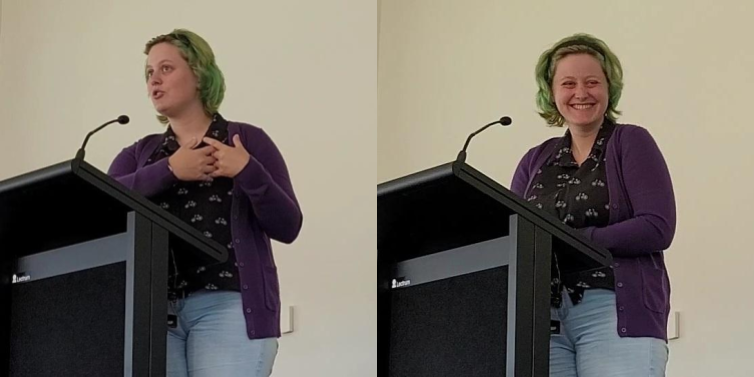
Through this article, I aim to reflect on my experiences and provide advice and anecdotes for anyone who may also be considering a degree of this nature.
What did I do?
Through 2022 and 2023, I completed a Masters of Environmental Planning at the University of Waikato. I enrolled originally in a Postgraduate Diploma of Environmental Planning, but I switched to a Masters when I was given the opportunity to undertake a research thesis.
My undergraduate studies were in physics and mathematics. It may seem a slight betrayal, then, to pivot from the hard sciences to the social sciences, but I had my reasons. I was drawn to Planning, and Environmental Planning in specific, due to my growing interest in the way that our cities are built. These structures and the decisions that lead to them are often invisible but intimately affect our day-to-day lives, from the time that we spend travelling to and from work, our health and the air we breathe, and even the connections we are able to make within and between communities.
“Environmental Planning at Waikato develops your knowledge of how human behaviour affects the environment. We’ll inspire you to understand how social, economic and cultural aspects, and the physical environment contribute to problems and provide solutions.”
– Environmental Planning, University of Waikato
As a postgraduate student, I was afforded much more flexibility in how I approached my studies. Therefore, I focused on the more technical side of the field, taking courses in GIS and urban spatial analysis. My thesis was focused on cycling network planning.
I completed these courses over three semesters: one course in Semester A of 2022, one course in Semester B of 2022, and finally, completing my thesis over Semester X (the so-called ‘full-year’ semester) in 2023. Studying part-time allowed me to continue working in order to fund my studies.
What Worked Well?
Creating a document management system.
Writing a thesis and undertaking original research means reading a lot of literature – and more than you think – for me, I read approximately 130 papers! Of those, I referenced 89 (approximately 70%) in my final thesis. It is important to come up with a method to keep track of all your findings and musings.
I knew that this was going to be an important step in my studies, so I made sure to frontload my literature review by setting up a documentation management system. For each piece of literature, I would record the name of the study, the author or authors, the journal name or publisher, the publication year, the link to the literature, and the key points.

Then, I organised each piece of literature by theme. For instance, the themes from my literature review, in order of importance, were:
- Cycling volumes. Studies investigating the relationship between cycling ridership (i.e., cycling volumes) and city planning variables – quality of infrastructure, safety, and so forth.
- Low-Stress cycling. Studies investigating the concept of low-stress cycling and the Level of Traffic Stress (LTS) Framework, which formed the basis of my research.
- Prioritisation tools. Studies making use of the LTS Framework to develop prioritisation tools for various jurisdictions.
- Case studies. Studies making use of the LTS Framework to evaluate the cycling networks of various cities.
- Surveys. Studies making use of surveys (both online and intercept) to investigate the relationship between cycling ridership and city planning variables.
- Other frameworks. Studies developing and exploring frameworks predating the LTS Framework – BLOS Framework, BCI Framework, BSL Framework, etc.
- GPS studies. Studies making use of GPS surveys and data to investigate the relationship between cycling ridership and city planning variables.
- Types of cyclists. Studies developing and exploring the ‘Four Types of Cyclists’ typology.
- General safety. Studies exploring safety elements generally.
- New Zealand context. Studies exploring cycling ridership in a New Zealand context.
- Background literature. Studies exploring topics such as the health benefits of cycling, the environmental impacts of cycling, and the history of cycling both in New Zealand and overseas.
- General. Studies not fitting in other categories.
For each theme, I produced a brief summary of the works, including the methodologies, findings, and limitations, complete with quotations and citations. These summaries proved extremely useful in solidifying my understanding of the literature as well as uncovering connections between them; when it came to the writing of my thesis, I was also able to paste them directly into my literature review section!
Writing my thesis in LaTeX.
With the number of figures, sections, and tables to juggle, compiling my thesis using LaTeX was a lifesaver.
What is LaTeX? LaTeX is a document compiling software used globally for scientific publication (Footnote 2). Text is written in a markdown format with formatting such as bold or italic text, text font and size, spacing, justification, and margins controlled by commands. The insertion of figures and tables is likely controlled. The text and commands are then compiled into a PDF document, where the formatting comes to life.
Writing my thesis in this way allowed me to focus on content over presentation while pulling everything together; my favourite aspect, however, is the ability to create figure and table references. A figure is automatically assigned a number (i.e., Figure 2, Figure 3) based on the order that they appear in the document, which is often referenced in the text. Instead of writing the figure number directly into the text, I can insert a reference. If I move the figure (changing its number), then the reference automatically changes with no input needed from me!
I only wish that I had figured out how to use automatic referencing!
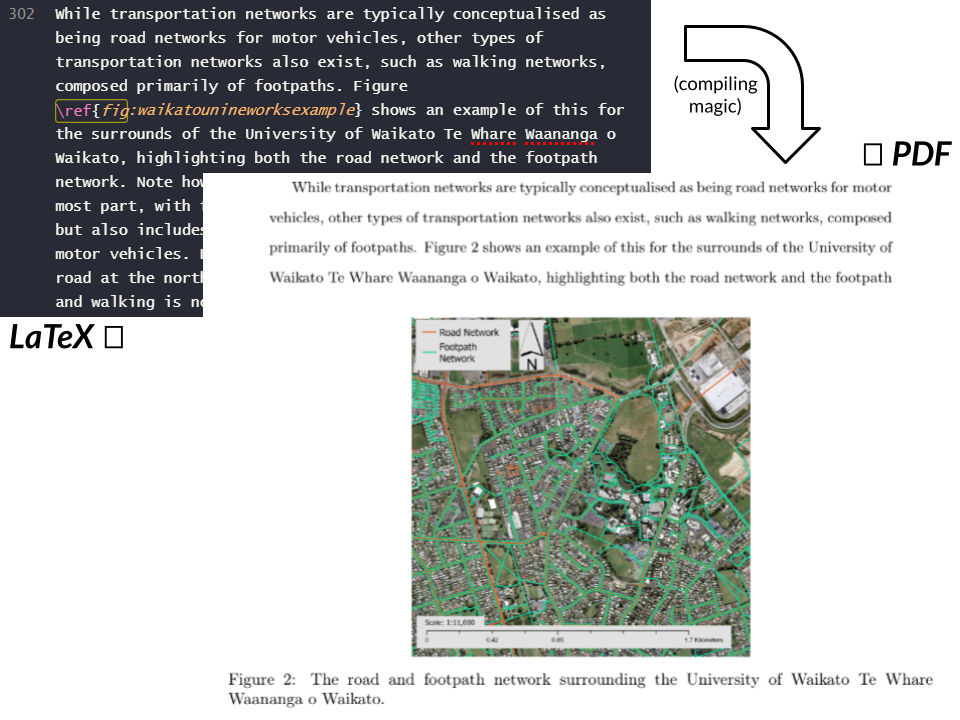
I would highly recommend anybody who is considering postgraduate education to get familiar with LaTeX. I have linked some resources below.
- Overleaf – online LaTeX editor.
- LaTeX Project – download open-source LaTeX software.
- Learn LaTeX in 30 Minutes – an introduction to using LaTeX.
- LaTeX for Beginners – another introduction to using LaTeX.
What would I do different next time?
Keep a research diary.
While I keep an extensive calendar of my time and my literature review notes, I did not keep a diary of what I was doing as I progressed through my research. When going back through my notes to write my thesis, I found it difficult to understand what I had done for certainly elements – and, most importantly, why.
I found myself wishing that I had kept a diary of what I had done each week, including the progress I had made during that week, the choices I had made when it came to methodology and data collection, and the justifications for those decisions. I had a handful of notes on such topics, but these were inconsistent through different documents and were therefore easy to lose.
How did I spend my time?
As a data nerd, I count myself lucky that I am a data gathering nerd in equal parts.
I am a religious user of Google Calendar. I put everything into my calendar – from work and commitments to hobbies and hangouts. If I attend something that was not in my calendar or it goes for longer or shorter than scheduled, I will retrospectively edit my calendar. I like the ability to go back in time and see how I spent my time on a particular day. Due to my obsession, I have a treasure trove of data with which to analyse.
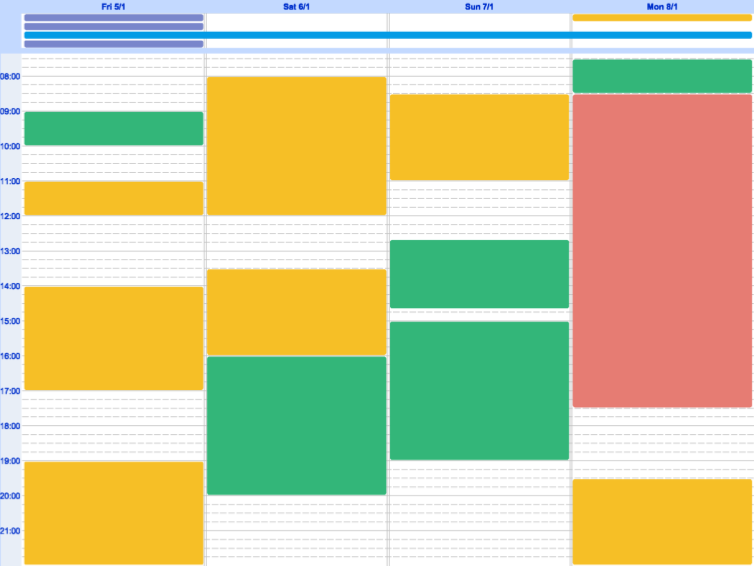
The most obvious question: how much time did I spend doing all of this?
First, let me start with a number, and then I can break it down: 598 hours. Overall, this education cost me $8,828, which means that I paid $14.76 for each hour of study.
How does this rank across all three semesters? Interestingly, I achieved approximately the same value for money across all three semesters, with Semester B being the cheapest at $13.26 per hour of study and Semester A being the most expensive at $15.23 per hour of study. I have a relatively steady effort!
| Semester | Cost ($) | Time (hours) | Hourly Cost ($/hr) |
| Semester A, 2022 | $1,081 | 72.0 | $15.23 |
| Semester B, 2022 | $1,081 | 81.5 | $13.26 |
| Semester X, 2023 | $6,666 | 444.5 | $15.00 |
What was the distribution of my time across the year of my research project? Noting the semester began at the end of February, I spent somewhere between 30 and 50 hours per month on this project. This felt like an enormous amount of time in the moment, but upon reflection, represents only between 7.5 and 12.5 hours per week. Hardly full-time study!
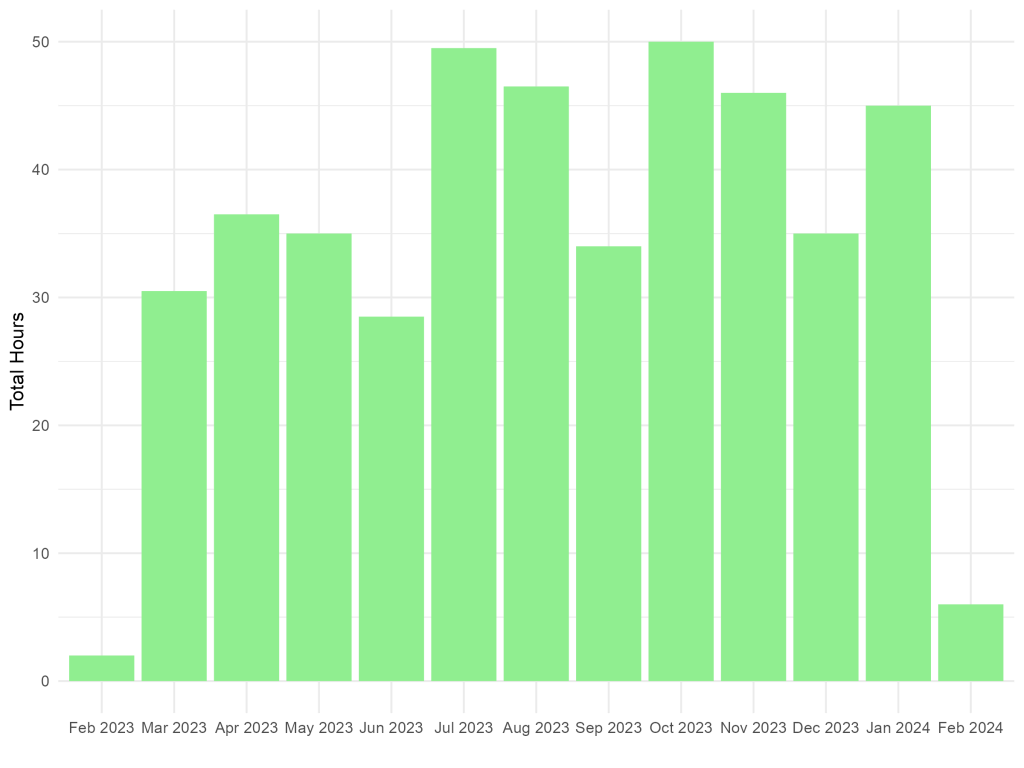
Of course, this does not include the indirect time spent on this project – thinking through problems and brainstorming solutions in the shower or on the way to work, and, of course, dreaming about it.
My project was a 90-point paper, which means that the University expects a student to spend approximately 900 hours to complete it. I spent a total of 444.5 hours. Time will tell if this was enough time to achieve a good result.
“Points bear a direct relationship to workload; one point equates to approximately 10 hours’ total work; so a student might expect to spend about 150 hours in total during a semester on a 15-point paper.”
– Glossary of University Terms, University of Waikato
What was my distribution of my time across the different parts of my thesis? To address this question, I grouped my different research activities into four categories.
- Preparation. My literature review and drafting my research brief.
- Methodology. Collecting data, coding, modelling, and interpreting my results.
- Thesis Writing. Drafting, reviewing, and revising.
- General. Other activities, including preparing for the Three Minute Thesis 3MT competition.
The table below shows the amount of time across those four categories. The graph below shows the full breadth of activities by those four categories, including the time coding across both GIS and R, the time drafting my thesis compared to the time revising my thesis, and the amount of time I spent on my literature review.
Unsurprisingly, I spent the most time on the Methodology stage of my thesis, and within that category, I spent most of time coding in GIS, which was essential for setting up the modelling that I wanted to do later. The input into my GIS model was huge, so I suspect that most of the time in this category was waiting for the code to run.
Conversely, the next biggest time commitment was the thesis writing. In fact, I spent more time revising my thesis than writing it! I am quite a confident writer – see this blog as evidence – so I was confident that I could write my thesis relatively quickly and to a good standard. However, there is so much that goes into a thesis than I expected. Not only did I need to explain my methodology, my results, and their implications, but I also needed to craft a story and justify my research topic, which meant returning to the literature.
| Category | Time (hours) |
| Preparation | 49 |
| Methodology | 204 |
| Thesis Writing | 157 |
| General | 20 |
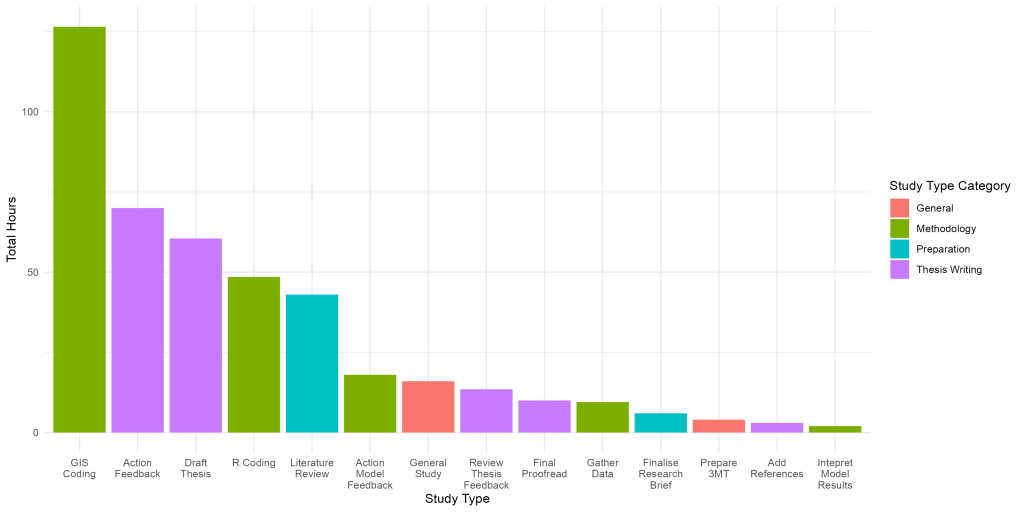
An Important Note
Before closing this chapter, I want to include below the acknowledgements section of my final thesis. It is important to me to acknowledge the support, guidance, and help that made it possible for me to finish this degree.
“It has been an absolute whirlwind of a year working towards this thesis. I have learned a lot of valuable skills about research, project planning, and academic writing that I know I will take with me into any and all future prospects. I would like to first and foremost thank my thesis supervisor, Dr Xinyu Fu. You encouraged me to take on this challenge and offered me so many opportunities throughout my time at the University of Waikato Te Whare Waananga o Waikato. Thank you for your support, your feedback, and, most of all, your time. I would also like to thank my friends and family for listening to me grumble while I’m working through a particularly challenging problem and bringing me motivation in the form of snacks when I’m spending another late night coding. In particular, I want to highlight my mother, Sandrine Smith, for helping me with the Herculean task of grammar and spell checking this beast. Any remaining errors are my own! In addition, I must also acknowledge all the amazing cycling advocates based here in Kirikiriroa Hamilton. Your tireless work making an incredible case for cycling in our city inspires me every day. Thank you for bringing me into the fray and demonstrating to me why this topic is such an important one. Finally, I would like to acknowledge the local government staff who responded to my multitude of queries and emails about your cycling data. This research would not have been possible without you.”
– When Bike Lanes Are Not Enough: An Exploration of the Level of Traffic Stress Framework in Aotearoa (2024), Melissa Smith
Thank you for reading! If you have any more questions about my experience, feel free to comment below or reach out. As for my next steps? I am looking forward to a break from academic, but I am looking forward to diving back in once I am ready!
Footnote 1. The colloquial term seems to be “Masters” but the official term is “Master”.
Footnote 2. Unintuitively, the name of this software is pronounced “LAH-tec” and not “LAY-tex”. See this guide.
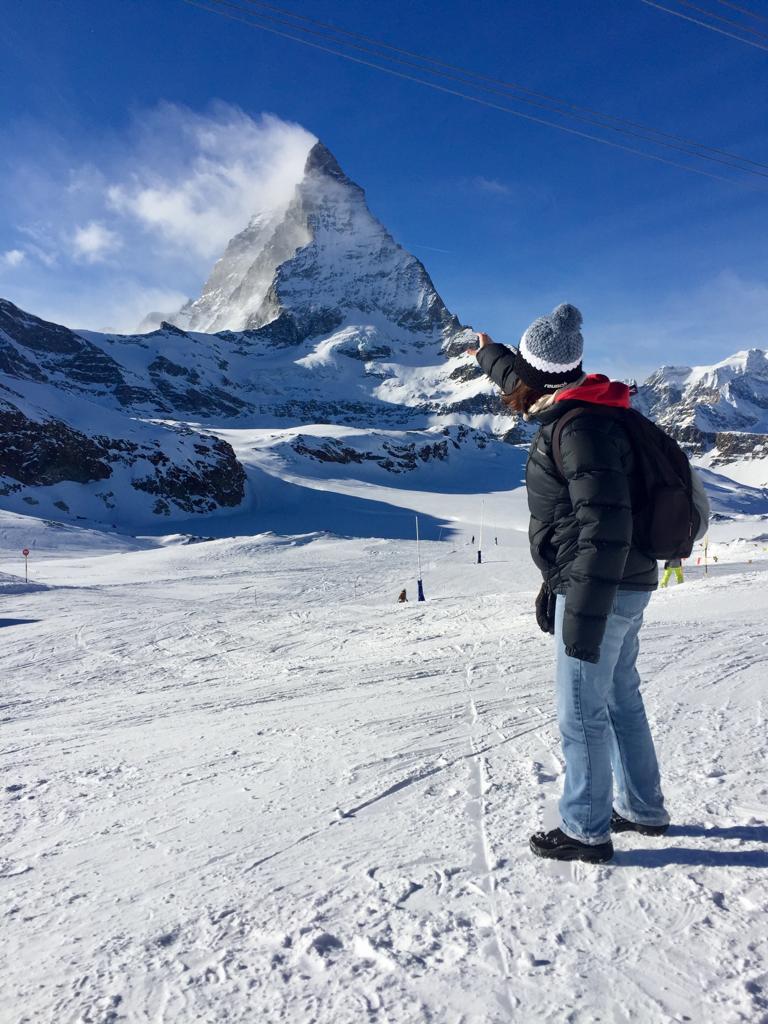
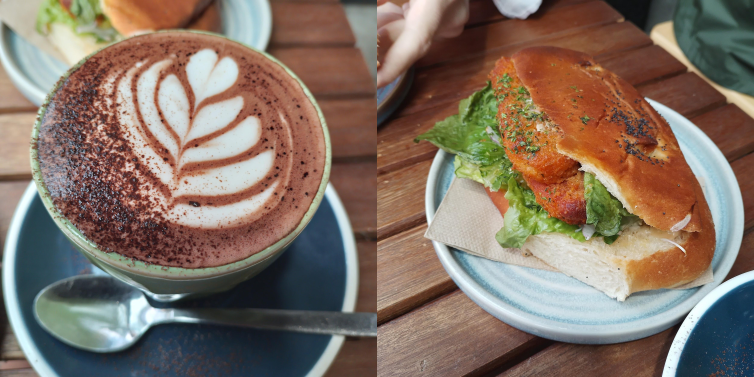


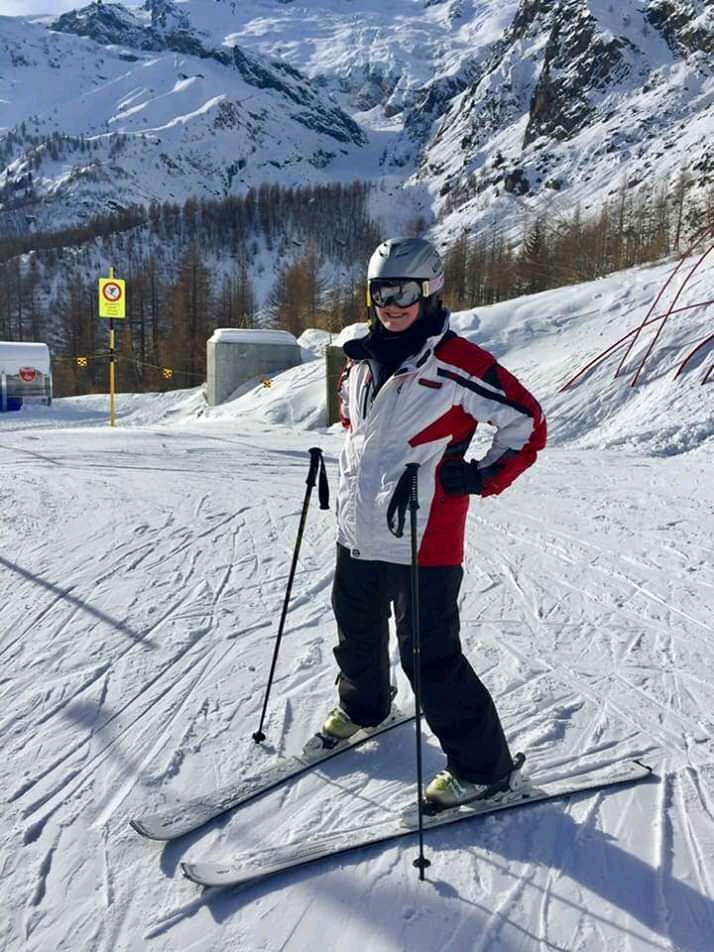
Leave a comment